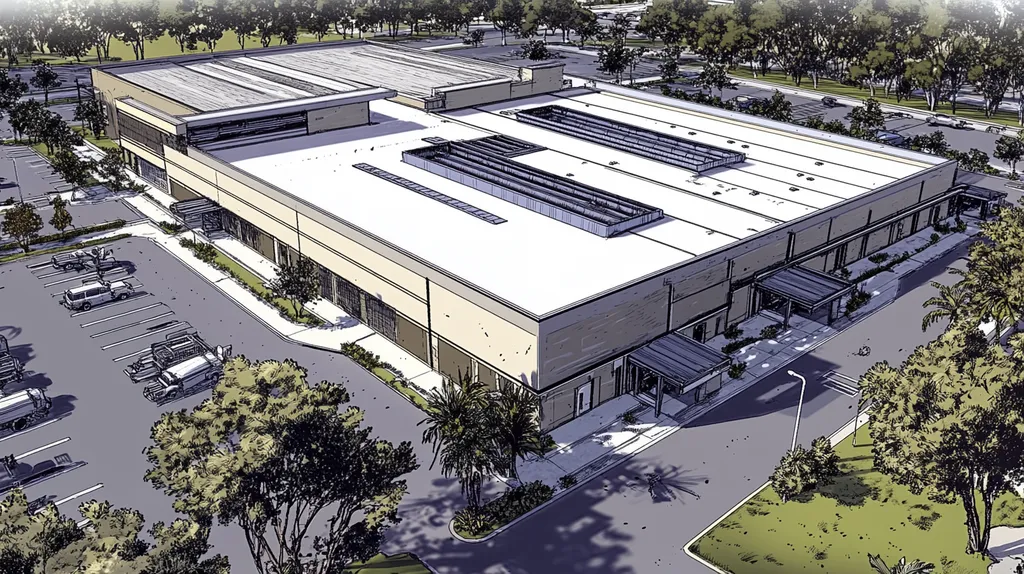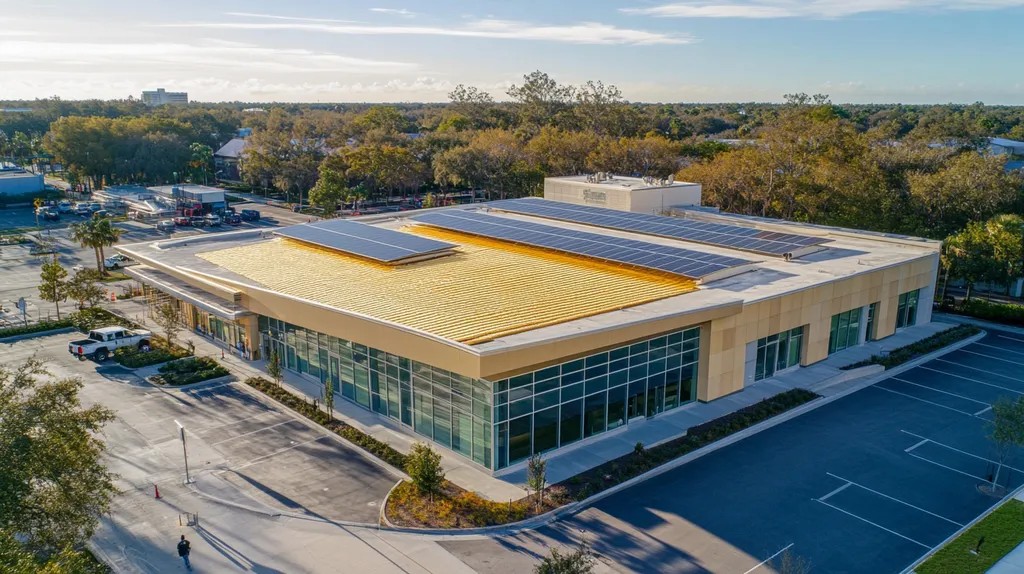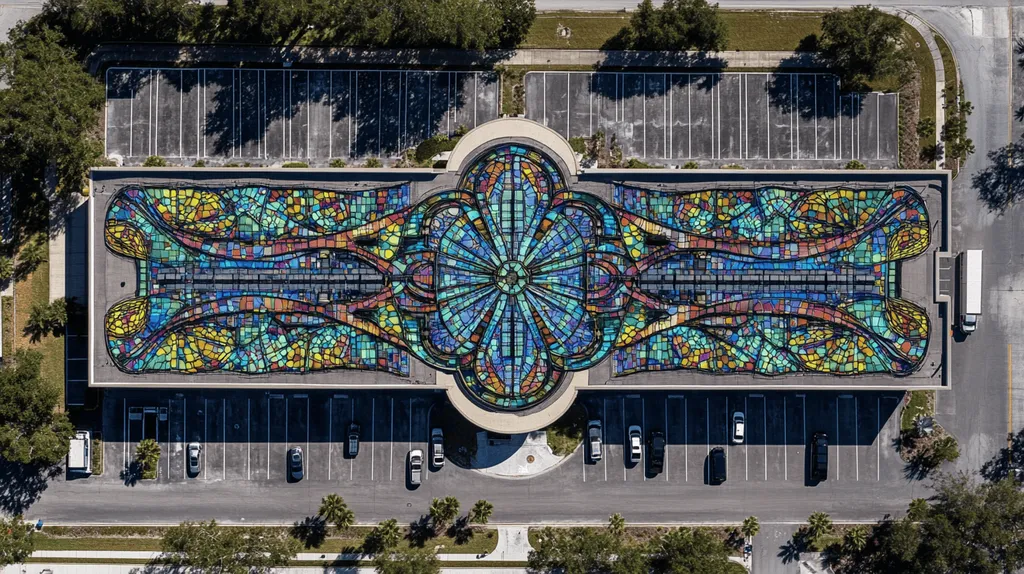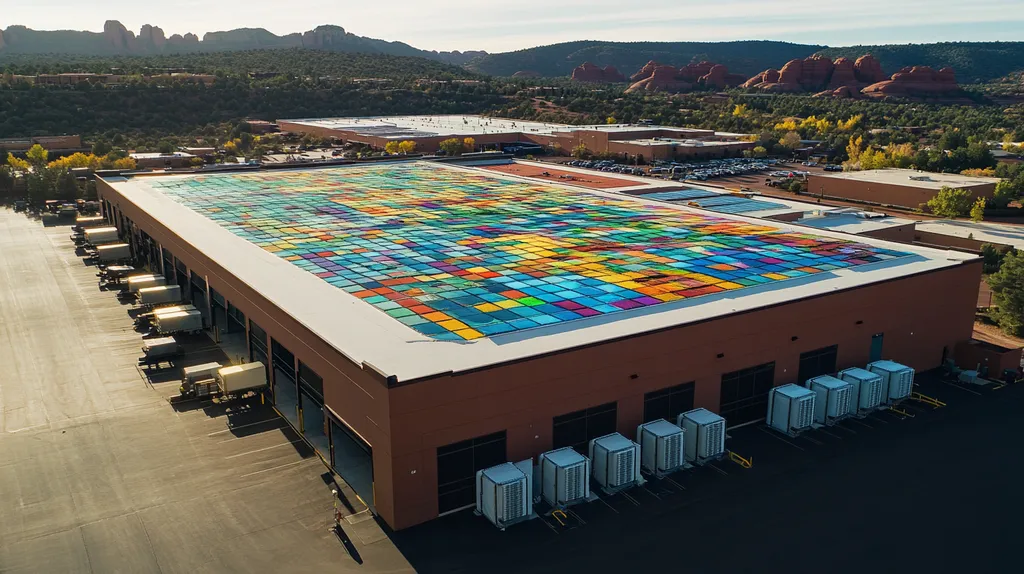Commercial roofing failures cost U.S. businesses over $2.5 billion annually, with up to 40% of these incidents linked directly to poor installation timing. Seasonal factors like temperature fluctuations and precipitation patterns critically impact adhesion quality, crew safety, and project costs.
For facility managers, selecting the optimal season for roof installation can mean the difference between a 20-year service life and premature system failure within 5 years.
This comprehensive guide examines how seasonal considerations affect performance, finances, compliance, and risk management in commercial roofing projects.
SECTION 1: PERFORMANCE FACTORS
Installing a commercial roof is a significant investment that directly affects a facility’s longevity and operational expenses. Timing is essential; the season in which roofing projects occur can dictate their overall success or failure. For example, inappropriate seasonal installations can lead to adhesion issues, resulting in leaks and costly repairs. Thus, understanding seasonal performance factors is vital for facility managers.
Seasonal Temperature Effects on Roofing Material Adhesion
Temperature is crucial for the proper adhesion of roofing materials. Many adhesives and sealants react poorly to extreme heat or cold, impacting their performance.
Take thermoplastic polyolefin (TPO), for instance; it needs specific temperature ranges for optimal adhesion. When installed in freezing conditions, the materials might fail to bond adequately, leading to potential future leaks.
On the flip side, high temperatures can cause materials to bubble or warp, which compromises their integrity. Therefore, knowing the ideal temperature ranges for each material type is essential for successful roof installations.
Key Action Items
Impact of Weather Conditions on Roof Installation Quality
Weather conditions play a critical role in ensuring a successful roofing installation. Rain, snow, and wind can lead to hazardous working conditions, hampering proper application and inspection of roofing materials.
For example, attempting to install a roof during the rainy season can trap moisture beneath layers, leading to mold growth and long-term damage. Similarly, high winds can threaten the stability of lighter materials during installation.
Therefore, it’s essential to keep an eye on weather forecasts and adjust project plans accordingly. Delays due to bad weather often result in rushed work when conditions improve, which can compromise installation quality.
Key Action Items
Contractor Availability and Scheduling Efficiency by Season
The season can have a significant impact on contractor availability and scheduling efficiency. Many roofing companies experience peak demand during the summer, when weather conditions are most favorable.
This high demand can lead to scheduling conflicts and potentially higher labor costs. In contrast, off-peak seasons, like late fall or early spring, often allow for greater flexibility, facilitating better scheduling and potentially lower expenses.
Moreover, contractors may be more open to price negotiations during slower months, offering additional savings for facility managers. By strategically planning roofing projects in off-peak periods, facility managers can optimize efficiency and minimize delays.
Key Action Items
SECTION 2: FINANCIAL CONSIDERATIONS
Choosing the right timing for a commercial roofing project is as much a financial strategy as it is an operational one. Seasonal fluctuations in labor and material costs can significantly influence the overall budget. Facility managers must account for these variations to prevent unexpected expenses and project delays.
Seasonal Cost Variations in Labor and Materials
Labor costs for roofing can vary greatly based on the season. During peak months like late spring and summer, contractors may charge higher rates due to increased demand. Alternatively, labor costs typically decrease in fall and winter when fewer roofing projects are underway.
Material prices also shift with the seasons. For example, roofing supplies are often more abundant and competitively priced in the summer months, whereas availability may drop during the off-season, resulting in inflated prices.
Understanding these seasonal trends is vital for effective budget planning. By timing roofing projects to coincide with favorable pricing, facility managers can optimize their budget and enhance cash flow management.
Key Action Items
Budget Planning: Balancing Off-Season Discounts and Urgency
While off-season discounts can be enticing, the urgency of roofing needs can complicate budget considerations. Putting off necessary repairs may save money now but can lead to severe issues, like leaks or structural problems, if a roof begins to fail.
For instance, opting to complete a roof replacement during the rainy season could appear cost-effective initially but may involve costly repairs if adverse weather disrupts the project.
To achieve a balanced approach, facility managers should prioritize critical repairs while considering the timing of less urgent projects for potential savings. This strategy minimizes risks and ensures essential work proceeds without undue delay.
Key Action Items
Scheduling Impact on Project Timelines and Cost Efficiency
The timing of roofing projects can hugely influence their schedules and efficiency. Seasonal weather patterns might lead to delays, affecting both labor availability and material shipments. For instance, heavy rain or snow can make it impractical to conduct roofing work safely.
Moreover, a compressed schedule can inflate costs. Rushed roofing projects may result in labor inefficiencies, which drive up expenses and jeopardize installation quality. Poor scheduling can also increase the likelihood of mistakes, leading to costly repairs later.
To optimize cost efficiency, facility managers should create realistic timelines that account for seasonal conditions and contractor schedules. This foresight enhances budget accuracy and boosts the probability of successful project completion.
Key Action Items
SECTION 3: COMPLIANCE REQUIREMENTS
Facility managers navigate a complex landscape of compliance when planning a commercial roofing installation. Adhering to safety regulations is not merely a legal responsibility; it safeguards workers and enhances project efficiency. The Occupational Safety and Health Administration (OSHA) sets strict guidelines for roofing work that change with the seasons. Grasping these regulations is crucial to avoid costly setbacks and fines.
Seasonal Safety Regulations for Roofing Work
Roofing work is inherently hazardous, and seasonal weather can amplify these dangers. Each season comes with distinct risks that safety regulations must mitigate. For example, icy surfaces during winter can increase the likelihood of slips and falls, while sweltering summer temperatures can provoke heat-related illnesses.
OSHA’s guidelines address these seasonal concerns by mandating proper safety measures, such as harnesses and guardrails for working at heights. Noncompliance can lead to accidents, causing liability issues for facility managers.
Training programs also need to adapt to seasonal challenges. Workers should receive education on identifying seasonal hazards and following appropriate safety protocols. Such proactive measures not only protect employees but also minimize work stoppages.
Key Action Items
Building Codes and Weather-Related Installation Standards
Building codes lay the groundwork for safe and effective roofing installations, often incorporating weather-related specifications that affect material selection. Regions prone to heavy snow, for instance, require roofs capable of supporting extra weight.
It’s vital to be aware of local codes that dictate permissible roofing types for different seasons. For example, while asphalt shingles can be installed in cooler temperatures, some single-ply membranes may only adhere properly with heat.
Neglecting to meet building codes can result in failed inspections, necessitating costly rework that delays project timelines and escalates overall expenses. Staying informed about local codes helps facility managers maintain schedules and keep budgets in check.
Key Action Items
Environmental Compliance for Seasonal Roofing Projects
Environmental regulations are increasingly shaping the roofing landscape. Facility managers must factor in these rules when planning installations to prevent hefty fines and environmental harm from improper material disposal.
Certain roofing materials may face restrictions based on environmental concerns in specific regions. Projects that produce debris must adhere to waste management guidelines to stay compliant.
Also, scheduling roofing work during wet seasons could lead to runoff issues, potentially breaching local environmental laws. Understanding the regulatory framework around environmental compliance enables facility managers to tackle these challenges proactively.
Key Action Items
SECTION 4: RISK MANAGEMENT
Effective risk management is essential for facility managers overseeing roofing installations. Weather-related risks vary significantly by season, affecting project timelines and the long-term durability of roofs. For instance, unanticipated rain or snow can stall roofing projects, leading to costly setbacks. Recognizing these risks and implementing proactive strategies can protect investments and ensure seamless operations.
Weather-Related Risks by Season and Mitigation Strategies
Weather is one of the most prominent risks facing commercial roofing installations. For instance, unexpected rainfall in the fall can set projects back, while winter snow creates additional hazards. Summer storms, including severe thunderstorms and hurricanes, pose significant threats to both timelines and safety during installations. To address these challenges, facility managers should keep a close eye on weather forecasts and schedule roofing work outside peak storm seasons.
Utilizing advanced weather prediction tools can offer valuable insights into possible disruptions. Additionally, considering site-specific adaptations—like proper drainage systems—can help reduce the risk of delays. Collaborating with experienced contractors familiar with regional weather patterns is crucial as well.
Establishing clear communication protocols with roofing teams is another essential strategy. Daily check-ins can help teams quickly adapt to changing weather conditions, thus maintaining project momentum. By implementing these measures, facility managers can proactively combat weather-related disruptions, enhancing installation success and roof longevity.
Key Action Items
Material Durability Concerns in Different Climates
Selecting suitable roofing materials is crucial for addressing durability issues across different climates. For example, roofs in hot, dry areas may need materials that resist UV damage and thermal expansion. Conversely, facilities in colder regions should choose materials that effectively insulate against freezing temperatures and moisture.
Proactive material selection not only prolongs roof lifespan but enhances resilience against severe weather. Facility managers should engage with roofing material suppliers to determine the best options tailored to their specific climate, focusing on long-term durability to prevent premature failures and expensive repairs.
Additionally, be aware that some roofing materials come with warranties contingent on climate conditions. Failure to comply with these specifications can void warranties, so it’s essential to align material choices with local weather challenges. Informed selection practices help optimize roof performance and minimize long-term maintenance expenses.
Key Action Items
Contingency Planning for Weather Delays and Damage
Contingency planning is a vital aspect of risk management in roofing projects. Even with careful preparation, unexpected weather events can still arise. Establishing a detailed contingency plan can effectively mitigate the impact of these unforeseen delays.
Such a plan should include ensuring the availability of materials for quick replacements in case of weather damage, along with contract clauses that address potential delays. Facility managers may also want to consider setting up temporary roofing solutions to protect buildings during adverse weather.
Moreover, maintaining an updated emergency contact list of contractors can expedite responses when urgent repairs are needed. Regular training for facility staff to manage emergency situations enhances preparedness, enabling timely action during crises. By actively preparing for potential disruptions, organizations can safeguard their assets and lessen the repercussions of weather-related risks on roofing installations.
Key Action Items
SECTION 5: OPERATIONAL PROCEDURES
The timing of a commercial roofing installation can directly influence its longevity and effectiveness. Seasonal weather can significantly affect crew safety and overall work quality. For instance, attempting to install roofing during extreme conditions may lead to poor adhesion and future leaks. It’s crucial for facility managers to adopt specific operational procedures that respond to seasonal changes while ensuring both safety and quality throughout the installation process.
Seasonal Workflow Adjustments and Crew Safety Protocols
Adjusting operational workflows to accommodate seasonal changes is vital for both efficiency and safety. In hot summer months, for instance, extreme temperatures require regular hydration breaks and adjustments to work shifts to cooler times of the day. During winter, snow and ice introduce risks that demand the use of fall protection and careful attention to surface conditions.
Implementing robust safety protocols is essential. Regular safety meetings should address seasonal hazards, ensuring all crew members are equipped with appropriate weather-resistant gear. These proactive measures not only enhance employee safety but also contribute to better productivity and overall job quality.
Effective training and open communication can further reduce seasonal risks. Managers should emphasize safety training tailored to seasonal conditions and create contingency plans for extreme weather occurrences. Having a flexible scheduling approach allows teams to adapt quickly when conditions become unsafe.
Key Action Items
Inspection and Verification Checkpoints for Installation Quality
Ensuring high quality during installation is crucial for the roof’s long-term performance. Setting up inspection checkpoints at critical stages can help identify potential issues before they escalate. For instance, before laying roofing materials, crews should ensure that all substrates are clean and free of debris for optimal adhesion.
Seasonal factors necessitate more frequent inspections. In the heat of summer, thermal expansion can cause materials to react differently, making it important to regularly check seams and fasteners. In colder months, inspections should confirm that materials aren’t affected by frost or moisture prior to installation.
Documentation of inspections serves as a vital quality control mechanism. Keeping thorough records not only promotes accountability but also aids in identifying issues down the line. By working closely with the installation team, facility managers can ensure that any findings lead to prompt corrective actions.
Key Action Items
Maintenance Scheduling Coordinated with Seasonal Factors
Effective maintenance scheduling is pivotal for ensuring that roofs remain in optimal condition, aligning activities with seasonal weather patterns. For instance, fall is an ideal time for proactive maintenance measures like gutter cleaning and inspections to identify water damage risks before winter.
Integrating seasonal weather forecasts into maintenance planning amplifies the effectiveness of these efforts. By anticipating challenges such as heavy rain or snow, facility managers can perform timely checks and resolve issues before they escalate into costly repairs.
A routine maintenance calendar is essential for keeping facility managers organized. An effective plan should include regular inspections, cleaning schedules, and climate-specific assessments. This proactive strategy helps preserve the roof’s integrity and significantly prolongs its lifespan.
Key Action Items
SECTION 5: OPERATIONAL PROCEDURES
Timing a commercial roofing installation is critical to its longevity and effectiveness. Seasonal conditions can drastically influence both the safety of the crew and the quality of the work. For example, installing roofing during severe weather can lead to poor adhesion, increasing the likelihood of leaks in the future. Facility managers must implement operational procedures that adapt to seasonal changes, ensuring safety and quality standards are upheld throughout the installation process.
Seasonal Workflow Adjustments and Crew Safety Protocols
Adjusting operational workflows to accommodate seasonal conditions is essential for efficiency and safety. In summer, extreme heat can result in heat stress for workers, requiring scheduled hydration breaks and adjustments to work hours during cooler parts of the day. Conversely, winter installations present risks such as ice and snow, prompting crews to employ fall protection measures and ensure proper surface conditions before work begins.
Implementing strict safety protocols is a necessity. This includes regular safety meetings to address specific seasonal hazards and ensuring all crew members are equipped with suitable weather-resistant gear. Proactive safety measures improve employee protection while enhancing overall productivity and job quality.
Proper training and clear communication can significantly mitigate seasonal risks. Managers should emphasize safety training related to seasonal conditions and develop contingency plans for extreme weather events. Additionally, having flexible scheduling allows teams to adapt quickly when conditions become unsafe.
Key Action Items
Inspection and Verification Checkpoints for Installation Quality
Quality assurance during installation is vital for the longevity of a roof. Setting up inspection checkpoints at critical stages can help identify potential issues before they escalate. For example, before laying the roofing material, crews should confirm that all substrates are clean and free of debris, which is essential for optimal adhesion.
Seasonal challenges require more frequent inspections. In hot weather, thermal expansion may cause materials to behave differently, necessitating checks for the integrity of seams and fasteners. In colder months, inspections should ensure that materials are not compromised by frost or moisture before installation.
Documenting inspections serves as a crucial quality control measure. Keeping thorough records promotes accountability and aids in diagnosing any issues that arise later. By collaborating closely with the installation team, facility managers can ensure that any findings lead to timely corrective actions.
Key Action Items
Maintenance Scheduling Coordinated with Seasonal Factors
Maintenance scheduling should align with seasonal weather patterns to keep roofs in optimal condition. For instance, autumn is an ideal time for proactive maintenance, allowing facility managers to clear gutters and inspect for potential water damage before winter sets in. Likewise, conducting pre-summer inspections helps prepare roofs for intense heat and potential storms.
Integrating seasonal weather forecasts into maintenance planning amplifies the effectiveness of these efforts. By anticipating potential issues such as heavy rain or snow, facilities can conduct timely checks and ensure that problems are addressed before they escalate into costly repairs.
Establishing a routine maintenance calendar keeps property managers organized. An effective plan should encompass regular inspections, cleaning schedules, and region-specific assessments. This proactive strategy not only preserves the roof’s integrity but significantly extends its lifespan.
Key Action Items
The Bottom Line
Commercial roofing failures cost U.S. businesses over $2.5 billion annually, with 40% directly attributed to poor installation timing.
Spring emerges as the optimal season for most commercial roofing installations, offering moderate temperatures that enable proper material adhesion while avoiding summer’s intense heat and winter’s freezing conditions.
However, facility managers must weigh multiple factors beyond weather, including contractor availability, material costs, and compliance requirements.
Success hinges on developing a comprehensive seasonal strategy that addresses safety protocols, quality control measures, and long-term maintenance planning.
By carefully coordinating installation timing with these critical elements, organizations can maximize their roofing investment’s lifespan while minimizing costly repairs and premature system failures.
FREQUENTLY ASKED QUESTIONS
Q. How does seasonal temperature affect my commercial roof?
A. Seasonal temperature plays a significant role in how well roofing materials bond. Extreme heat can warp or bubble materials, while cold temperatures can prevent proper adhesion, leading to potential leaks. Always ensure installations occur during ideal temperature ranges to maximize adhesion and longevity.
Q. How can seasonal cost variations impact my commercial roof project?
A. Seasonal fluctuations can raise or lower labor and material costs significantly. During peak seasons, labor rates typically increase due to high demand, while off-peak months might offer lower costs. Monitoring seasonal trends helps facility managers optimize budget planning for roofing projects.
Q. What safety regulations should I consider for my commercial roof?
A. Safety regulations vary by season due to weather impacts on roofing work. Each season brings distinct hazards, from slips on icy surfaces to heat stress in summer. Familiarizing yourself with OSHA guidelines ensures compliance and protects worker safety during installations.
Q. How do weather-related risks impact commercial roofing installations?
A. Weather conditions can significantly derail roofing projects, causing delays and increasing costs. Rain, snow, or extreme temperatures can hinder progress and affect material performance. Proactively scheduling installations during favorable weather minimizes disruptions and protects project timelines.
Q. How can inspections ensure my commercial roof’s quality?
A. Regular inspections at critical stages of installation can identify issues early, ensuring quality. These evaluations should verify that substrates are clean and materials are appropriate for seasonal conditions, which helps prevent long-term performance problems and costly repairs.
Q. What role does maintenance scheduling play in roof longevity?
A. Coordinated maintenance scheduling with seasonal factors helps preserve roof integrity. Timing inspections and repairs during favorable weather reduces the risk of damage from heavy rain or snow. An organized maintenance calendar promotes effective upkeep and extends the roof’s lifespan.
Q. How can I choose the best materials for my industrial roof?
A. Selecting the right materials for your industrial roof involves considering your local climate, including temperature and moisture patterns. Engaging with suppliers who understand regional requirements can help you choose durable materials suited to withstand specific weather conditions, ensuring long-lasting performance.










